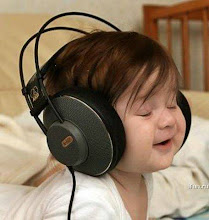On Stravinsky and Context
It was a little under 100 years ago that Stravinsky’s “The Rite of Spring” first debuted to a famous riot and all kinds of subsequent hubbub about the future of orchestral music and a bevy of challenges to the basic assumptions of what “music” is and what “art” is. The world of “serious” music has never been the same.Having never heard this piece played live before, last night’s concert at OCU was a wonderful experience. Going with a few friends who had never heard this music before, I thought it was a great opportunity to do a little research. I went into last night’s experiment with one hunch- namely that what was shocking and perverse and evil and troubling and “weird” to an orchestra-goer 95 years ago is now humdrum.
Here was my reasoning: in 95 years, a lot has happened in the worlds of music. Art music went waaaaaaaay further out than Stravinsky with regard to dissonance and rhythm. Tonality died an official death. “Found sounds” and electronic noise became fashionable in some circles. Composers employed chance in their pieces. Absolutely nothing became off-limits. In the popular music world sounds became rough too, thanks largely to the electric guitar, the Marshall amp and a healthy dose of teen angst. And in the middle brow world of soundtrack music, your average action or horror movie doesn’t sound all that different than the stuff we heard last night.
But I forgot one important thing—context. When I sit down in a concert hall, facing the stage, there are only two things demanding my attention: the music and the music makers. I am especially attuned to “experience art” in that situation. For me, “The Rite of Spring” is still barbaric and affecting. There is no Arnold Schwarzenegger on a giant screen to distract my mind. I see the physicality of a kid sawing away at his viola, bow hair flying about as he tries to achieve the volume levels demanded by the score. I see the weird gestures the conductor has to make to keep the odd meters stilting along. I see the faces. Oh, my Lord! The faces! So intense and determined to pull off this unnatural monstrosity.
Sitting on the front row while a large orchestra plays at that volume and with that degree of dissonance…that is something else, my friends. The general consensus among the tabula rasa folks was that it was an intense, scary piece. Riot-worthy? Who knows.
But it is still “art” that demands your attention.
(Thanks to my friends Lisa Hollowell and Josh Lester for being so talented!)


2 Comments:
Too cool! I have never heard Rite played live myself. I wish I could have gone last night.
I have played Petrouchka and the Firebird, but I have a feeling that it would pale in.....intensity with the Rite of Spring.
I like how primitive it is and bloody. All composition is by nature very difficult to create, but Rite sounds very spontaneous and alive despite its careful construction. So much of the 20th century's music became very dry, including much of Stravinsky's later music. I like a lot of that too - I love the Octet for Wind Instruments - but it's nice to remember that before two World Wars devastated Europe, there was artistic craziness.
I like Petrouchka as well, but you're right--The Rite just seems brutal and violent in comparison.
My favorite of the Stravinsky I have heard, however, is "L'histoire Du Soldat." I like it for the quirkiness of the instrumentation and the lively sense of humor.
I wouldn't even think these two pieces were by the same guy...
Speaking of post-war artistic craziness, I just yesterday got done reading _The Rest Is Noise: Listening to the Twentieth Century_ by Alex Ross, I think is his name.
It's a very enlightening book that is helping me fill in the holes in my musical education. Probably more on that later...
Post a Comment
<< Home